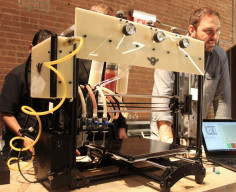
To our joy, a team of researchers from Massachusetts Institute of Technology (MIT) have created a screen that will allow cinema goers to have the 3D experience without the need to wear the required glasses.
World's first 3D printed building opens in Dubai
MIT’s Computer Science and Artificial Intelligence Lab (CSAIL) claim “Cinema 3D” will also make the pictures more crisp giving viewers a richer experience than before.
The prototype developed by the team uses a special array of lenses and mirrors to enable viewers to watch a 3D movie from any seat in a theater. “Existing approaches to glasses-free 3D require screens whose resolution requirements are so enormous that they are completely impractical,” said MIT professor Wojciech Matusik. “This is the first technical approach that allows for glasses-free 3D on a large scale.”
Glasses-free 3D, like in Nintendo's 3Ds, has been around for a while which uses what is called the parallax barrier technology. However, this requires the viewer to be seated in one single position which obviously won’t work for cinema where the audience is dispersed over a large area.
The researchers at MIT got around this problem by a multi parallax barrier where each viewer receives a different image tailored according to his or her distance and angle. Viewers are limited in movement by the edges of their seat; therefore, each parallax barrier can be displayed to that narrow range of movement.
You can now 3D-print pizza in less than four minutes
The bad news is that Cinema 3D is still in its early phases and would require further development before it is available to the general public. The current working model is as small as an iPad and requires as many as 50 mirrors or lenses to work.
But in theory, the technology could work in any context in which 3D visuals would be shown to multiple people at the same time, such as billboards or storefront advertisements. Matusik says that the team hopes to build a larger version of the display and to further refine the optics to continue to improve the image resolution
"It remains to be seen whether the approach is financially feasible enough to scale up to a full-blown theater,” says Matusik. “But we are optimistic that this is an important next step in developing glasses-free 3-D for large spaces like movie theaters and auditoriums.”
Have something to add to this story? Share it in the comments section below.



















1713889672-1/Plastic-waste-(2)1713889672-1-270x192.webp)























COMMENTS
Comments are moderated and generally will be posted if they are on-topic and not abusive.
For more information, please see our Comments FAQ